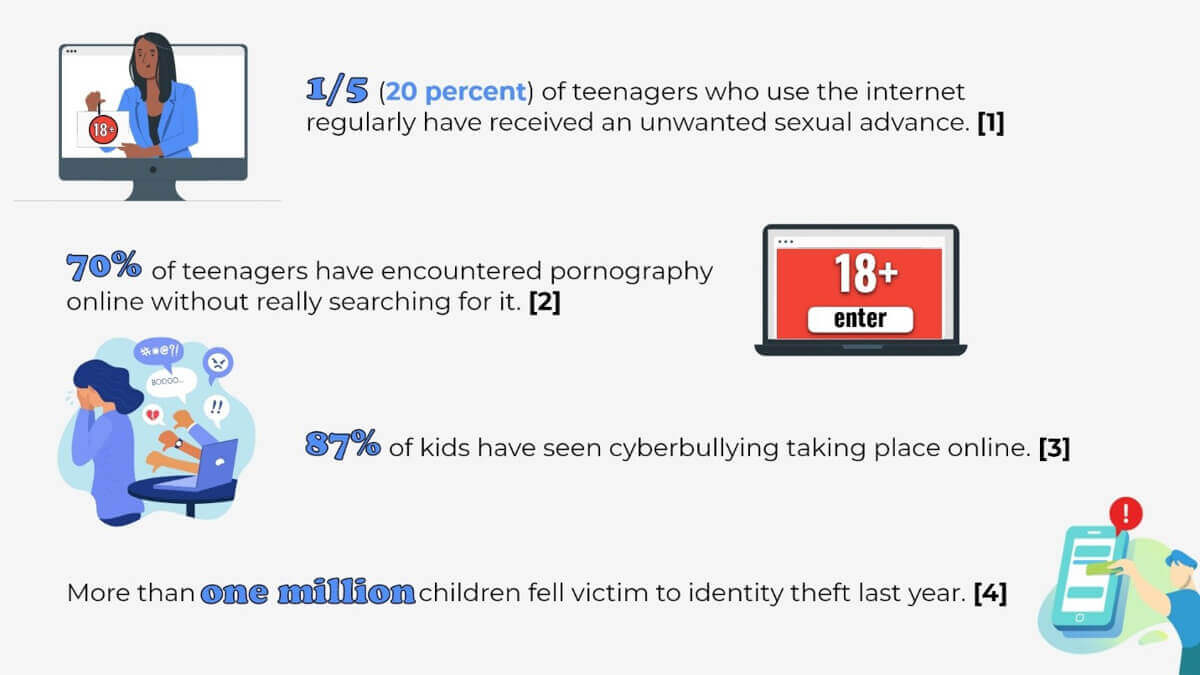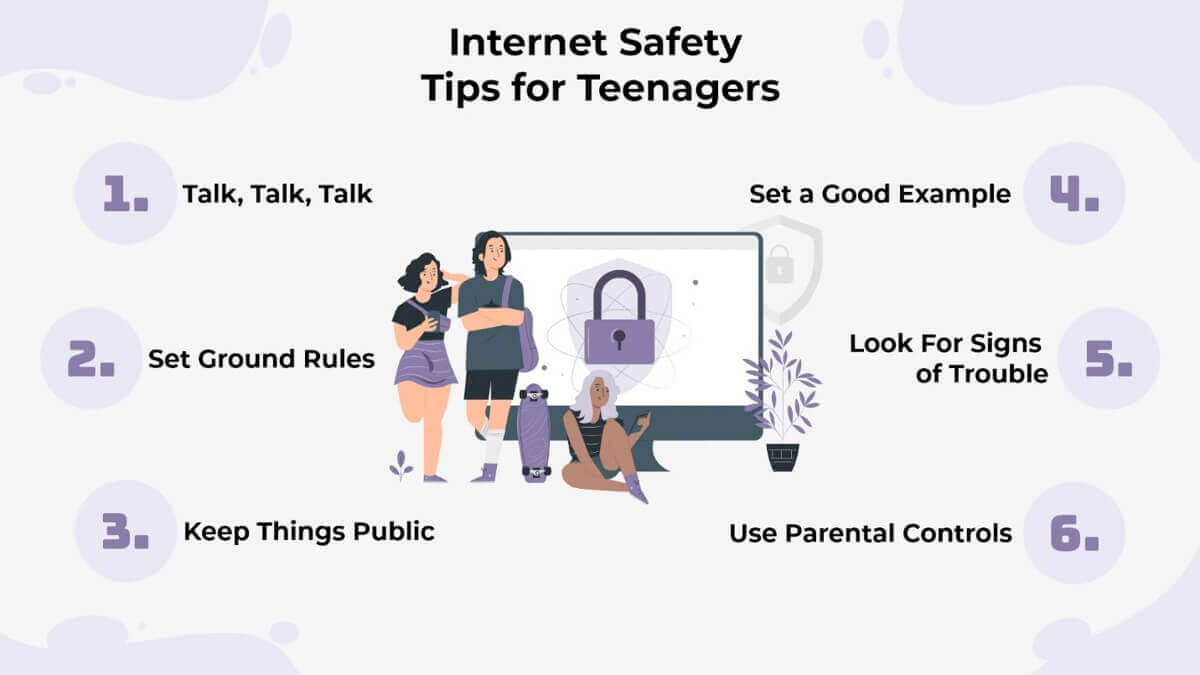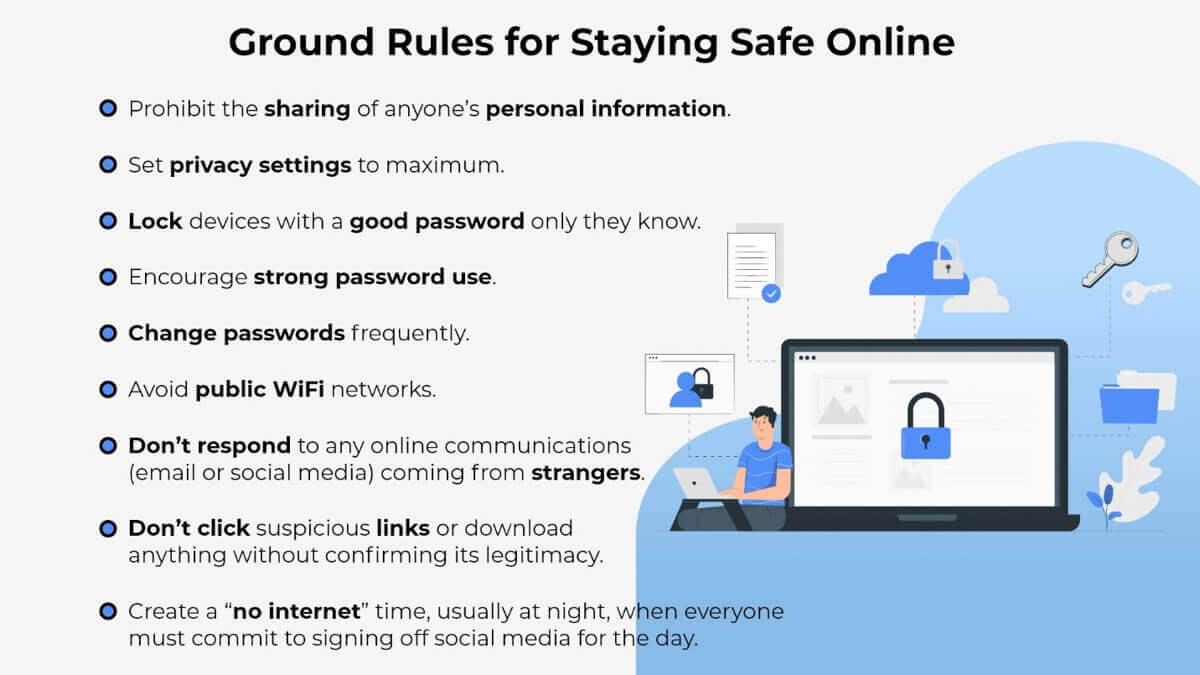Lower your internet bill
61% of people overpay for their internet.
Are you one of them?
Unlock exclusive offers in your area!
Call now
[tel]Enter zip code
1 Star is Poor & 5 Stars is Excellent.
* Required

Written by Harry Emerson - Pub. Jul 22, 2020 / Updated Oct 15, 2024
Table of Contents
Are you happy with your Internet service?

About the author
Harry Emerson is the Senior Content Manager at Infinity Dish. He is passionate about creating content that focuses on the digital divide, emerging broadband technologies, and covering all issues and news regarding telecom industries around the world.
Harry is a believer in the power of information and, as the Senior Content Manager, he focuses on broadening the understanding of Internet and broadband technologies to enhance the TV experience for viewers. Although he mainly concentrates on writing about ways to improve satellite TV and fiber, broadband, and satellite Internet services, Harry has been published on a variety of publications on topics like culture, arts, social issues, and the newest tech gadgets coming out on the market.
He has been working as an active writer in the tech industry for over fifteen years, having started as a blog contributor in small publications around the United States and Canada. At Infinity Dish, Harry makes sure that everything published is quality content that helps people understand the ins and outs of the telecom industry, along with helping customers attain a deeper understanding of all the ways Infinity Dish can service them.
Harry completed his undergraduate studies at Brooklyn College with a degree in English. Originally wanting to pursue a teaching career, Harry worked as a teacher’s assistant for a few years after college until he finished his Master’s of Science in Data Science from Fordham University.
Since switching careers to technology, Harry has had the chance to work as a Data Scientist at various companies around the United States focusing on developing predictive analytics, artificial intelligence, and developing software with Python—all while keeping up with the latest news about the expansion of satellite TV and blogging about the newest technology available in rural areas. Most recently, as of the last five years, Harry has been producing engaging content on Infinity Dish to help expand the knowledge of Internet and satellite TV service issues.
Harry is a homebody and binges on science fiction TV shows on Friday nights with his wife Chelsea and their two kids. He currently resides in Vermont and owns a small farm. He likes to make his own cheese and plans on backpacking through Europe with his family during their next vacation. Harry is passionate about animals’ rights and has been a vegan since he was a teenager.
Today’s teenagers are the first generation to be considered true digital natives, meaning they have grown up with the internet and feel very comfortable using it in a wide variety of settings.
Besides, it also means that it’s pretty tough, if not impossible, to keep them away from the internet. In fact, according to Pew, 95 percent of teenagers have access to a smartphone, while 45 percent say they are online “almost constantly."
That so many teens are online is great. The internet is a tremendous resource for learning and socializing – but for parents, whose top priority is children’s safety, these numbers can be concerning. We all know about the dangers that lurk on the internet.
However, no one is advocating trying to keep teens away from the internet; this would not only be impossible but impractical. We live in a digital world, and the answer to keeping kids safe lies in helping them become smart online users, especially teenagers, who will soon fly on their own in the world.
Below we’ve compiled a summary of the different threats teenagers face and outlined some strategies for helping you keep them safe while they operate in an increasingly digital world.
We all face threats when we’re online, but teenagers face a unique set of them, primarily because they are still developing their abilities to discern danger and protect themselves. To adequately assist them and keep them safe, it’s essential to be fully aware of the many different risks that are out there.
For those who think these threats are abstract, consider the following stats:

These are not meant to scare you but rather to point out the reality of the dangers teenagers face when they are using the internet.
Although the scarier threats children face online generally come from an external source, a lack of maturity and education can also lead teenagers to get into trouble online. Knowing the ways they can expose themselves to danger is vital to keeping them safe online. Some of these pitfalls include:
As you can see, many different things are threatening our children’s health and safety when they are online. But since we’ve already thrown out shielding them from this environment as impractical and impossible, it’s time to start talking about what we can do to keep them safe while navigating the murky, sometimes scary waters of the internet.
Below we’ve put together a list of tips and strategies that will help keep teenagers safe online. We’ve put particular emphasis on social media sites since these are where teens tend to spend most of their time and also where they are most likely to get themselves in trouble, but they can be used in almost any online environment.

Talk, Talk, Talk
Working to keep teenagers safe has always been a challenging task. As they grow up, their sense of self and desire for independence grows, which can lead to risky and rebellious behavior. Even if it is set in their best interest, any rule or regulation can seem like a threat to their individuality, which can make them very, very difficult to enforce.
As a result, while teenagers need to have some structure when operating in an online environment, the best thing for keeping them safe is engaging them in frequent and constructive conversations about their use of the internet. This includes discussing the risks they might face so they can actively choose to adopt certain safety measures. The idea is to get them to see it as their idea, not yours.
These discussions should begin even before kids get smartphones, but they should become regular events soon after teens go online. You want them to buy-in to these, so, if you’re having trouble stimulating some dialogue, here are some tips:
When starting a conversation, have an open mind. Ask teenagers what social media networks they use and why they use them. Find out if they understand the risks the site poses and what they are doing to mitigate them. When you come across something troubling, don’t jump right to suspicion.
For example, if your teenager is talking about Snapchat – an app that allows you to send photos to people that disappear after 30 seconds – instead of saying, “Nothing on the internet disappears," a comment that will surely garner an eye roll, consider asking, “But what’s stopping someone from taking a screenshot?"
It’s entirely possible teens won’t even have thought of things such as these, and asking this question might get them to think twice about what they share via Snapchat, which is entirely the point of this conversation.
In general, though, the more interested (and less curious) you can be, the more likely your teenager is to open up about their online habits, which is necessary for you to help them be safe.
Of course, every teenager is different. In the event these conversations expose troubling behavior, you may need to react more decisively. But don’t jump right to this, and you will likely find these discussions to be much more productive.
In a similar light, a great thing to do with your teenagers is ask them to teach you how to use a particular social media network (even if you may already have an idea how it works.) This works well for a few reasons:
First, it allows you to see firsthand the kind of content they see on their social media feeds. Should you come across anything you consider concerning or troubling, this is a great chance to ask about it and find out how they usually react, as well as to discuss what the most appropriate response is.
Second, this is also an excellent chance to find out what they already know about privacy and the status of information on the internet. For example, while you’re being given a tutorial, ask questions such as “So, when you post something, who can see it?" There’s a chance your kids have already set their privacy settings so that only people in their network can see it, but there’s also a chance they didn’t know you could do this. It’s the perfect time to talk to them about it and why it’s important.
Such an interaction can be a straightforward way to understand how teens are using social media and protecting themselves online and can also reveal any shortcomings that need to be addressed.
Although full of pride and independence, your teenagers still follow your lead, but they might not always seek out your advice. One thing you can do to get quality conversations going about the risks of being online is to break the ice with your own experience.
To give you an idea, consider sharing something you saw on social media that bothered you and then talk about how you reacted. Maybe you saw someone post something hateful or encountered someone who was out to cause you pain. Sharing that these things happen to you and that they are concerning but solvable, can help bridge the gap between you and your teenager and get them to discuss their online habits more freely.
You can ask them if they have ever had a similar experience, and if so, what they did. No matter their answer, this is an excellent opportunity to get a discussion started to encourage good habits.
Set Ground Rules
Although frequent constructive decisions about how to stay safe online are the best way to do so, it’s also essential to establish ground rules to minimize the risks that can come up.
One thing that’s important for this to work is that the ground rules apply to everyone in the house. Since no one is without a smartphone in this day and age, making the rules just for your teenagers will seem unfair.
In some circumstances, this is simply the way it has to be. But if you’re claiming these rules are for safety, but the entire family isn’t following them, this contradiction could easily lead to a lack of buy-in.
Which rules you apply will depend on your family, but here are some that we have found to be the most effective:

Personal information includes address, phone number, photos, social security numbers, etc., and it’s important everyone knows this, so there is no confusion. In the case of photos, exceptions can be made so long as everyone is on board; if you take a family photo, make sure everyone consents before posting it to Facebook.
For privacy settings, this should be a no-brainer, but maybe you could set up the standard where you verify this is done on each other’s accounts, ensuring there are no mistakes and showing everyone is on board.
One rule we didn’t include but that can work well is the requirement that teenagers add the rest of their family on social media if they want to use a particular site. They will likely protest but explain to them they shouldn’t be posting or sharing anything on there they wouldn’t want you to see anyway, and that you’re not going to be spying on them. Again, how you want to approach this specific rule will depend on your family, but it’s something to consider.
Keep Things Public
We strongly advocate for instituting a policy in the home that bans phones, computers, tablets, and other connected devices from private places in the house, such as bedrooms. Keeping these electronics out in public spaces not only encourages more responsible amounts of screen time, but it also discourages risky behavior. We are much less likely to visit sites we shouldn’t be on or do things we shouldn’t do when there is the risk that someone might look over our shoulder.
If your teen uses their bedroom to study, then maybe you want to establish a time when smartphones and other devices are removed so everyone can move on and get ready for sleep.
Of course, this can be tough to enforce, which leads us to our next point.
Set a Good Example
A lot of the effort you put into trying to keep your teenager safe will go to waste if you turn around and ignore the example you’re trying to set. Teens will doubt the effectiveness of whatever policies you put in place if they see that older family members aren’t taking them seriously.
So, this may mean keeping your phone and other devices out of your bedroom after a particular time, which might be a difficult adjustment to make. However, doing this and encouraging your kids to do the same will make everyone safer, and that should be reason enough to sacrifice a bit of convenience on your end.
Look For Signs of Trouble
Ideally, by taking a more proactive approach, you can address the potential dangers teenagers face online before they become a serious threat. But it’s not always possible to head off every foe, and as we mentioned, teenagers are prone to trying to move against the grain (to put it nicely.)
As a result, you must be aware of some of the signs children exhibit when they are having a negative online experience (being approached by strangers, being, or engaging in cyberbullying.)
Some of the most tell-tale of these signs include:

Use Parental Controls
One other thing you can do to keep your teenagers safe while they’re online is to activate the parental controls on your home WiFi and mobile networks. Parental controls allow you to restrict access to specific sites and types of websites, which can keep teens away from harmful and inappropriate content. In some cases, you can also limit sharing and set up times when the internet cannot be accessed.
These controls come standard on almost any home internet connection, and while using them is recommended, we suggest you do so with caution. Blocking teens from parts of the web could be seen by them as an infringement on their autonomy, so make sure you’re clear which sites you’re blocking and why. Also, ensure you’re not visiting these sites behind their back.
Again, conversation is vital and is what will ultimately keep teens safe while online. Still, parental controls are a helpful supplement that makes it easier to enforce the established ground rules for everyone’s security.
The internet is a truly wonderful thing that has completely changed the course of history. However, while it creates many positive opportunities, it also exposes us, particularly kids and teenagers, to a whole new set of dangers. By following the tips outlined in this guide, teens can adequately prepare for their digital lives, identify threats before they become serious, and react appropriately when they come across something nefarious, all essential components of a safe online experience.

About the author
Harry Emerson is the Senior Content Manager at Infinity Dish. He is passionate about creating content that focuses on the digital divide, emerging broadband technologies, and covering all issues and news regarding telecom industries around the world.
Harry is a believer in the power of information and, as the Senior Content Manager, he focuses on broadening the understanding of Internet and broadband technologies to enhance the TV experience for viewers. Although he mainly concentrates on writing about ways to improve satellite TV and fiber, broadband, and satellite Internet services, Harry has been published on a variety of publications on topics like culture, arts, social issues, and the newest tech gadgets coming out on the market.
He has been working as an active writer in the tech industry for over fifteen years, having started as a blog contributor in small publications around the United States and Canada. At Infinity Dish, Harry makes sure that everything published is quality content that helps people understand the ins and outs of the telecom industry, along with helping customers attain a deeper understanding of all the ways Infinity Dish can service them.
Harry completed his undergraduate studies at Brooklyn College with a degree in English. Originally wanting to pursue a teaching career, Harry worked as a teacher’s assistant for a few years after college until he finished his Master’s of Science in Data Science from Fordham University.
Since switching careers to technology, Harry has had the chance to work as a Data Scientist at various companies around the United States focusing on developing predictive analytics, artificial intelligence, and developing software with Python—all while keeping up with the latest news about the expansion of satellite TV and blogging about the newest technology available in rural areas. Most recently, as of the last five years, Harry has been producing engaging content on Infinity Dish to help expand the knowledge of Internet and satellite TV service issues.
Harry is a homebody and binges on science fiction TV shows on Friday nights with his wife Chelsea and their two kids. He currently resides in Vermont and owns a small farm. He likes to make his own cheese and plans on backpacking through Europe with his family during their next vacation. Harry is passionate about animals’ rights and has been a vegan since he was a teenager.
Congratulations, you qualify for deals on internet plans.
Speak with our specialists to access all local discounts and limited time offers in your area.
[tel]61% of people overpay for their internet.
Are you one of them?
Unlock exclusive offers in your area!
Call now
[tel]Enter zip code